|
Books Should Be Free Loyal Books Free Public Domain Audiobooks & eBook Downloads |
|
|
Books Should Be Free Loyal Books Free Public Domain Audiobooks & eBook Downloads |
|
Plays |
|---|
|
Book type:
Sort by:
View by:
|
By: John Galsworthy (1867-1933) | |
|---|---|
 Skin Game
Skin Game
A small play in three acts. A kind of comic tragedy. The plot tells the story of the interaction between two very different families in rural England just after the end of the First World War. Squire Hillcrist lives in the manor house where his family has lived for generations. He has a daughter, Jill, who is in her late teens; and a wife, Amy, as well as servants and retainers. He is "old money", although his finances are at a bit of low ebb. The other family is the "nouveau riche" Hornblowers,... | |
 Joy
Joy
| |
 The Foundations
The Foundations
| |
 The Pigeon
The Pigeon
| |
 The Little Dream
The Little Dream
| |
 The Mob
The Mob
| |
By: John Jay Chapman (1862-1933) | |
|---|---|
 The Treason and Death of Benedict Arnold A Play for a Greek Theatre
The Treason and Death of Benedict Arnold A Play for a Greek Theatre
| |
By: John Kendrick Bangs (1862-1922) | |
|---|---|
 The Bicyclers and Three Other Farces
The Bicyclers and Three Other Farces
| |
By: John Leacock (1729-1802) | |
|---|---|
 The Fall of British Tyranny American Liberty Triumphant
The Fall of British Tyranny American Liberty Triumphant
| |
By: John Lydgate (1370?-1451?) | |
|---|---|
 Disguising at Hertford
Disguising at Hertford
| |
By: John M. Synge (1871-1909) | |
|---|---|
 The Playboy of the Western World
The Playboy of the Western World
| |
 Riders to the Sea
Riders to the Sea
| |
 In Shadow of the Glen
In Shadow of the Glen
| |
 Deirdre of the Sorrows
Deirdre of the Sorrows
| |
 The Well of the Saints
The Well of the Saints
| |
By: John Milton (1608-1674) | |
|---|---|
 Samson Agonistes
Samson Agonistes
“The Sun to me is darkAnd silent as the Moon,When she deserts the nightHid in her vacant interlunar cave.”Milton composes his last extended work as a tragedy according to the classical Unities of Time, Place and Action. Nevertheless it “never was intended for the stage” and is here declaimed by a single reader.Samson the blinded captive, in company with the Chorus of friends and countrymen, receives his visitors on their varying missions and through them his violent story is vividly recalled... | |
By: John Todhunter (1839-1916) | |
|---|---|
 The Black Cat A Play in Three Acts
The Black Cat A Play in Three Acts
| |
By: John Webster (c.1580 - c.1634) | |
|---|---|
 The Duchess of Malfi
The Duchess of Malfi
John Webster's bloody Jacobean tragedy exposes the decadence of the Italian court. The virtuous Duchess of Malfi, a young widow, secretly marries her steward Antonio, and is subsequently persecuted by her brothers: the sexually obsessed and eventually mad Ferdinand, and the corrupt Cardinal. | |
 The White Devil
The White Devil
John Webster's The White Devil (1612) is a Jacobean revenge tragedy, replete with adultery, murder, ghosts, and violence. The Duke of Brachiano and Vittoria Corombona decide to kill their spouses, Isabella and Camillo, in order to be together, aided by the crafty and ambitious Flamineo, Vittoria's brother. Their actions prompt vows of revenge from Isabella's brother Francisco, the Duke of Florence, and Count Lodovico, who was secretly in love with her. The title refers to the early modern proverb that "the white devil is worse than the black," indicating the hypocrisy practiced by many of the characters in the play. | |
By: Joseph Conrad (1857-1924) | |
|---|---|
 One Day More
One Day More
A one-act play. Eccentric Captain Hagberd has been waiting for years for his son to come home from the sea. He has scrimped and saved, outfitting a house for Harry to inherit upon his return, which will be in only "one day more." He has also planned that Harry will marry Bessie, the repressed maiden next door. Note: The recording was done outside, so there will be some ambient noise (airplanes, lawn mowers, birds, children... etc). | |
By: Joseph Harris (1650?-1715?) | |
|---|---|
 The City Bride (1696) Or The Merry Cuckold
The City Bride (1696) Or The Merry Cuckold
| |
By: Juliana Horatia Gatty Ewing (1841-1885) | |
|---|---|
 The Peace Egg and Other tales
The Peace Egg and Other tales
| |
By: Kalidasa | |
|---|---|
 Translations of Shakuntala and Other Works
Translations of Shakuntala and Other Works
| |
 Sakoontala or the Lost Ring An Indian Drama
Sakoontala or the Lost Ring An Indian Drama
| |
By: Kenneth McGaffrey (??-1938) | |
|---|---|
 The Sorrows of a Show Girl
The Sorrows of a Show Girl
Originally printed in The Morning Telegraph in New York, this is the story of Miss Sabrina, the show girl, and her ups and downs with the unpredictable theatrical industry and the Great White Way, the lights and glamour of Broadway. "In order to set myself right with both the public and the vast army of Sabrinas that add youth and beauty to our stage, and brilliancy and gaiety to our well known cafes, I wish to say that she is all that she should be...”- Kenneth McGaffrey | |
By: Langdon Mitchell (1862-1935) | |
|---|---|
 The New York Idea
The New York Idea
I find it very hard to classify "The New York Idea" under any of the established rubrics. It is rather too extravagant to rank as a comedy; it is much too serious in its purport, too searching in its character-delineation and too thoughtful in its wit, to be treated as a mere farce. Its title—not, perhaps, a very happy one—is explained in this saying of one of the characters: "Marry for whim and leave the rest to the divorce court—that's the New York idea of marriage." Like all the plays,... | |
By: Lewis Morris (1833-1907) | |
|---|---|
 Gycia A Tragedy in Five Acts
Gycia A Tragedy in Five Acts
| |
By: Lord George Gordon Byron (1788-1824) | |
|---|---|
 Manfred
Manfred
Manfred is a dramatic poem in three acts by Lord Byron, and possibly a self confessional work. A noble, Manfred, is haunted by the memory of some unspeakable crime. In seeking for forgetfulness and oblivion, he wanders between his castle and the mountains. He has several encounters with the people who try to assist him, as well as spirits that rule nature and human destiny. The poem explores themes of morality, religion, guilt and the human condition. | |
 The Island
The Island
Written late in his career, Byron's narrative poem The Island tells the famous story of the mutiny on board the Bounty, and follows the mutineers as they flee to a South Sea island, "their guilt-won Paradise." | |
By: Lucy Maud Montgomery (1874-1942) | |
|---|---|
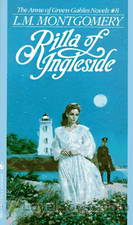 Rilla of Ingleside
Rilla of Ingleside
Rilla of Ingleside is the eighth book in the Anne of Green Gables series and focuses on the inspiring journey of Rilla Blythe, the youngest daughter of Anne and Gilbert, as she transforms from a carefree young girl into an enduring young woman swept into the chaos of war. Written from a female perspective, Montgomery accurately depicts a time in history, as she provides a contemporaneous account of the war and serves up the most emotional book in the series. Set during the First World War, the novel explores themes of coming of age, love, separation, and most importantly women’s roles during the war... | |
By: M. M. (Mordecai Manuel) Noah (1785-1851) | |
|---|---|
 She Would Be a Soldier The Plains of Chippewa
She Would Be a Soldier The Plains of Chippewa
| |
By: Marion Craig Wentworth (1872-) | |
|---|---|
 War Brides: A Play in One Act
War Brides: A Play in One Act
| |
By: Mary Eleanor Wilkins Freeman (1852-1930) | |
|---|---|
 Giles Corey, Yeoman A Play
Giles Corey, Yeoman A Play
| |
By: Mary Hunter Austin (1868-1934) | |
|---|---|
 The Arrow-Maker A Drama in Three Acts
The Arrow-Maker A Drama in Three Acts
| |
By: Mary Wollstonecraft Shelley (1797-1851) | |
|---|---|
 Proserpine and Midas
Proserpine and Midas
| |
By: Mercy Otis Warren (1728-1814) | |
|---|---|
 The Group A Farce
The Group A Farce
| |
By: Michael Strange | |
|---|---|
 Clair de Lune A Play in Two Acts and Six Scenes
Clair de Lune A Play in Two Acts and Six Scenes
| |
By: Molière | |
|---|---|
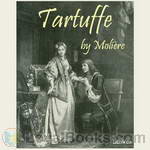 Tartuffe
Tartuffe
Jean-Baptiste Poquelin, known by his stage name Molière, was a French playwright and actor who is considered to be one of the greatest masters of comedy in Western literature. Among Molière's best-known works is Tartuffe or The Hypocrite, written in 1664. Though Tartuffe was received well by the public and even by Louis XIV, its popularity was lessened when the Archbishop of Paris issued an edict threatening excommunication for anyone who watched, performed in, or read the play.Tartuffe, a pious fraud who pretends to speak with divine authority, has insinuated himself into the household of Orgon... | |
By: Moliere (1622-1673) | |
|---|---|
 The Imaginary Invalid
The Imaginary Invalid
The Imaginary Invalid is a three-act comédie-ballet by the French playwright Molière. It was first performed in 1673 and was the last work he wrote. The plot centers around Argan, the 'imaginary invalid' who is completely dependent on his doctors and wants to marry his daughter to a doctor against her will, so that he will always have medical care freely available to him. In an ironic twist of fate, Molière collapsed during his fourth performance as Argan on 17 February and died soon after. | |
By: Montrose Jonas Moses (1878-1934) | |
|---|---|
 Representative Plays by American Dramatists 1765-1819
Representative Plays by American Dramatists 1765-1819
| |
By: Nicholas Rowe (1674-1718) | |
|---|---|
 Jane Shore: A Tragedy
Jane Shore: A Tragedy
Covering some of the plot of Shakespeare's Richard III, Jane Shore focuses on the mistress of the late Edward IV, also known as "The White Queen". In this short tragedy, Jane tries to thwart Richard's rise to power while experiencing love, betrayal, forgiveness, and an unexpected visitor who arrives in disguise. Cast ListLord Hastings: Tchaikovsky Duke of Gloster: ToddHW Belmour: Adrian Stephens Sir Richard Ratcliffe: Wayne Cooke Sir William Catesby: Alan Mapstone Dumont: Tomas Peter Jane Shore: Michele Eaton Alicia: WendyKatzHiller Jane's Servant: Larry Wilson Alicia's Servant: B. Jones Stage Directions: Adrienne Prevost | |
By: Olive Tilford Dargan (1869-1968) | |
|---|---|
 Semiramis and Other Plays
Semiramis and Other Plays
| |
By: Oliver Goldsmith (1730-1774) | |
|---|---|
 She Stoops to Conquer
She Stoops to Conquer
In She Stoops to Conquer, or The Mistakes of a Night, a young lady pretends to be a servant in order to win the notice of a young man who is painfully shy around women of his own class. Hilarious misadventures and mayhem ensue before matters are neatly wrapped up at the end. This play, one of the great English comedies, was first performed in 1773 and continues to be very popular with audiences today. | |
By: Oliver Optic (1822-1897) | |
|---|---|
 The Birthday Party, A Story For Little Folks
The Birthday Party, A Story For Little Folks
Flora Lee’s birthday came in July. Her mother wished very much to celebrate the occasion in a proper manner. Flora was a good girl, and her parents were always glad to do any thing they could to please her, and to increase her happiness. | |
By: Orrie Lashin | |
|---|---|
 Class of '29
Class of '29
| |
By: Oscar Wilde (1854-1900) | |
|---|---|
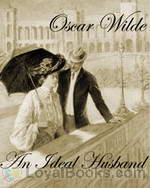 An Ideal Husband
An Ideal Husband
This story opens at a fashionable dinner party in Sir Robert Chiltern's home in the heart of London's stylish Grosvenor Square. One of Lady Chiltern's old school-friends, Mrs. Cheveley, a woman with a dubious past, accosts Sir Robert and threatens to expose a financial crime that he had once participated in, unless he agrees to finance a fraudulent construction project that she's promoting. Lady Chiltern is astounded when her husband who had been the severest critic of this project suddenly begins to speak in its favor... | |
 Lady Windermere's Fan
Lady Windermere's Fan
Lady Windermere’s Fan: A Play About a Good Woman is a four act comedy by Oscar Wilde, published in 1893. As in some of his other comedies, Wilde satirizes the morals of Victorian society, and attitudes between the sexes. The action centres around a fan given to Lady Windermere as a present by her husband, and the ball held that evening to celebrate her 21st birthday. | |
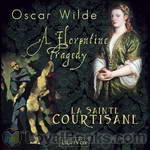 A Florentine Tragedy and La Sainte Courtisane
A Florentine Tragedy and La Sainte Courtisane
Two short fragments: an unfinished and a lost play. A Florentine Tragedy, left in a taxi (not a handbag), is Wilde’s most successful attempt at tragedy – intense and domestic, with surprising depth of characterisation. It was adapted into an opera by the Austrian composer Alexander Zemlinsky in 1917. La Sainte Courtisane, or The Woman Covered in Jewels explores one of Wilde’s great idées fixes: the paradox of religious hedonism, pagan piety. Both plays, Wildean to their core, revel in the profound sadness that is the fruit of the conflict between fidelity and forbidden love... | |
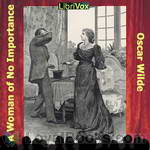 A Woman of No Importance
A Woman of No Importance
A Woman of No Importance is a play by Irish playwright Oscar Wilde. The play premièred on 19 April 1893 at London's Haymarket Theatre. It is a testimony of Wilde's wit and his brand of dark comedy. It looks in particular at English upper class society and has been reproduced on stages in Europe and North America since his death in 1900. | |
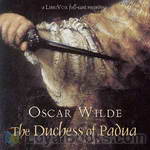 The Duchess of Padua
The Duchess of Padua
Guido Ferranti, a young man, travels to Padua with his friend Ascanio after receiving a mysterious letter from a stranger, claiming to know the true secret of Guido's birth. His plan of revenge goes awry, however, when he falls in love with his enemy's beautiful wife, the Duchess of Padua. | |
 Intentions
Intentions
| |
 Vera; or the Nihilists
Vera; or the Nihilists
Vera; or, The Nihilists is a play by Oscar Wilde. It is a melodramatic tragedy set in Russia and is loosely based on the story of Vera Zasulich. It was the first play that Wilde wrote. It was produced in the United Kingdom in 1880, and in New York in 1882, but it was not a success and folded in both cities. It is nowadays rarely revived. | |
 For Love of the King a Burmese Masque
For Love of the King a Burmese Masque
| |
By: Paul Carus (1852-1919) | |
|---|---|
 The Buddha A Drama in Five Acts and Four Interludes
The Buddha A Drama in Five Acts and Four Interludes
| |
By: Percival Wilde (1887-1953) | |
|---|---|
 The Noble Lord A Comedy in One Act
The Noble Lord A Comedy in One Act
| |
 The Reckoning A Play in One Act
The Reckoning A Play in One Act
| |
By: Philippe de Mornay (1549-1623) | |
|---|---|
 A Discourse of Life and Death
A Discourse of Life and Death
| |
By: Pierre Corneille (1606-1684) | |
|---|---|
 Polyeucte
Polyeucte
| |
By: R. N. Dutta | |
|---|---|
 Tales from the Hindu Dramatists
Tales from the Hindu Dramatists
| |
By: Rabindranath Tagore (1861-1941) | |
|---|---|
 The Post Office
The Post Office
| |
 Chitra, a play in one act
Chitra, a play in one act
| |
 The King of the Dark Chamber
The King of the Dark Chamber
| |
 The Cycle of Spring
The Cycle of Spring
| |
By: Richard Brinsley Sheridan (1751-1816) | |
|---|---|
 The Rivals
The Rivals
The play is set in Bath in the 18th century, a town legendary for conspicuous consumption and fashion at the time. Wealthy, fashionable people went there to "take the waters", which were believed to have healing properties. The plot centres on the two young lovers, Lydia and Jack. Lydia, who reads a lot of popular novels of the time, wants a purely romantic love affair. To court her, Jack pretends to be "Ensign Beverley", a poor officer. Lydia is enthralled with the idea of eloping with a poor soldier in spite of her guardian, Mrs... | |
 School For Scandal
School For Scandal
Richard Brinsley Sheridan's comedy was first performed in 1777 and focuses on the intrigues and scandals of the British upper classes. Lady Sneerwell wants to marry Charles Surface, while Joseph Surface wants to marry Maria, an heiress and ward of Sir Peter Teazle. Maria, however, prefers Charles over Joseph. In order to detach her from Charles, Lady Sneerwell and Joseph spread rumors about an affair between Charles and Lady Teazle, Sir Peter's new young wife. Meanwhile, Sir Oliver Surface, newly returned from the East Indies, assumes various disguises to test his nephews' characters. Misunderstandings, mistaken identities, gossip, and bad behavior abound in this uproarious comedy. | |
By: Richard Harding Davis (1864-1916) | |
|---|---|
 Miss Civilization
Miss Civilization
Miss Civilization, a one act comedy, tells the story of a young woman who matches wits with three burglars attempting to rob her house. | |
By: Richard Steele (1672-1729) | |
|---|---|
 Funeral: or Grief A-La-Mode
Funeral: or Grief A-La-Mode
The Funeral: or, Grief à-la-Mode, a Comedy, was written in the summer of 1701, and given to Christopher Rich, of the Theatre Royal, Drury Lane, in October. Soon afterwards it was acted, and it was published by Jacob Tonson between December 18 and 20, with the date 1702 on the title-page. The music to the songs, by William Croft, appeared between December 16 and 18. [] The play was revived occasionally in most of the years between 1703 and 1734, and from time to time during the following half-century, the last date, apparently, being April 17, 1799... | |
By: Robert Browning (1812-1889) | |
|---|---|
 A Blot in the 'Scutcheon
A Blot in the 'Scutcheon
| |
By: Robert Rogers (1731-1795) | |
|---|---|
 Ponteach The Savages of America
Ponteach The Savages of America
| |
By: Rutherford Mayne (1878-1967) | |
|---|---|
 The Turn of the Road A Play in Two Scenes and an Epilogue
The Turn of the Road A Play in Two Scenes and an Epilogue
| |
 The Drone A Play in Three Acts
The Drone A Play in Three Acts
| |
By: Samuel Low (1765-) | |
|---|---|
 The Politician Out-Witted
The Politician Out-Witted
| |
By: Sara Ware Bassett (1872-1968) | |
|---|---|
 Mrs. Christy's Bridge Party
Mrs. Christy's Bridge Party
| |
By: Shepherd Knapp | |
|---|---|
 The Christmas Dinner
The Christmas Dinner
| |
 Down the Chimney
Down the Chimney
| |
 Up the Chimney
Up the Chimney
| |
By: Sir Arthur Conan Doyle (1859-1930) | |
|---|---|
 The Hound of the Baskervilles (dramatic reading)
The Hound of the Baskervilles (dramatic reading)
The Hound of the Baskervilles is the third of four crime novels by Sir Arthur Conan Doyle featuring the detective Sherlock Holmes. Originally serialised in The Strand Magazine from August 1901 to April 1902, it is set largely on Dartmoor in Devon in England's West Country and tells the story of an attempted murder inspired by the legend of a fearsome, diabolical hound. | |
By: Sophie May (1833-1906) | |
|---|---|
 Prudy Keeping House
Prudy Keeping House
| |
By: Sophocles (495-406 BC) | |
|---|---|
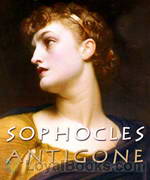 Antigone
Antigone
This is the final installment in Sophocles's Theban Plays, following Oedipus Rex and Oedipus at Colonus. Oedipus's daughter Antigone deliberately breaks the laws of Thebes when she buries her brother's body and is sentenced to death. She clashes with Creon, the King of Thebes, over what constitutes justice and morality: the laws of the state or the laws of the individual. | |
 Electra
Electra
Sophocles' play dramatizes the aftermath of Agamemnon's murder by his wife Clytemnestra and her lover Aegisthus. His daughter Electra is hungry for revenge and longs for the return of her brother Orestes to help her achieve her ends. | |
By: Stephen Phillips (1864-1915) | |
|---|---|
 Nero
Nero
| |
By: Sudraka | |
|---|---|
 The Little Clay Cart Mrcchakatika
The Little Clay Cart Mrcchakatika
| |
By: Susan Glaspell (1876-1948) | |
|---|---|
 Trifles
Trifles
On the surface, this short play is a slice-of-life story about a murder investigation in the rural United States. However, it is also a story about the relationships between men and women, husbands and wives, and the often-overlooked "trifles" which can say so much about a person's life. | |
By: Thomas Baker (fl. 1700-1709) | |
|---|---|
 The Fine Lady's Airs (1709)
The Fine Lady's Airs (1709)
| |
By: Thomas Dekker (1572?-1632) | |
|---|---|
 The Noble Spanish Soldier
The Noble Spanish Soldier
| |
By: Thomas Dixon (1864-1946) | |
|---|---|
 A Man of the People A Drama of Abraham Lincoln
A Man of the People A Drama of Abraham Lincoln
| |
By: Thomas Godfrey (1736-1763) | |
|---|---|
 The Prince of Parthia A Tragedy
The Prince of Parthia A Tragedy
| |
By: Thomas Hardy (1840-1928) | |
|---|---|
 The Dynasts
The Dynasts
| |
By: Thomas Kyd (1558-1594) | |
|---|---|
 The Spanish Tragedie
The Spanish Tragedie
| |
By: Thomas Love Peacock (1785-1866) | |
|---|---|
 Headlong Hall
Headlong Hall
Headlong Hall is the first novel by Thomas Love Peacock, published in 1815 (dated 1816). As in his later novel Crotchet Castle, Peacock assembles a group of eccentrics, each with a single monomaniacal obsession, and derives humor and social satire from their various interactions and conversations. The setting is the country estate of Squire Harry Headlong Ap-Rhaiader, Esq. in Wales. | |
By: Thomas Morton (1764-1838) | |
|---|---|
 Speed the Plough A Comedy, In Five Acts; As Performed At The Theatre Royal, Covent Garden
Speed the Plough A Comedy, In Five Acts; As Performed At The Theatre Royal, Covent Garden
| |
By: Thomas Otway (1652-1685) | |
|---|---|
 Venice Preserved A Tragedy in Five Acts
Venice Preserved A Tragedy in Five Acts
| |
By: Unknown | |
|---|---|
 Everyman
Everyman
The Somonyng of Everyman (The Summoning of Everyman), usually referred to simply as Everyman, is a late 15th-century English morality play. Like John Bunyan's novel Pilgrim's Progress, Everyman examines the question of Christian salvation by use of allegorical characters, and what Man must do to attain it. The premise is that the good and evil deeds of one's life will be tallied by God after death, as in a ledger book. The play is the allegorical accounting of the life of Everyman, who represents all mankind... | |